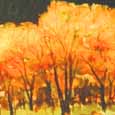They call it “incubation”. This is an often crucial stage in any creative process. It is means allowing time for your subconscious to work on a solution for your latest creative conundrum. Sleep on it as they say – figuratively or literally. Go do something else. Let your mind relax, daydream. Many very creative and highly successful people have their most profound thoughts and solutions happen this way. As diverse a group as: John Cleese, while writing comedy sketches for Faulty Towers, Henri Poincare, who pioneered discoveries in mathematics, physics, and engineering in the late 1800’s, and the famous inventor Thomas Edison, – all were aware of the importance of incubation time in order to be more creative. In order to tap into the subconscious mind, Edison would work hard on a problem, and then purposely doze off in a chair holding a ball bearing in each hand. On the floor below each hand was a tin plate. When he fell asleep and the noise woke him, he quickly jotted down any new thoughts. Many of his problems with inventions were solved this way. Considering that only a tiny amount of our daily input is processed consciously, it makes tremendous sense to tap into the huge resources available in our unconscious thought.


